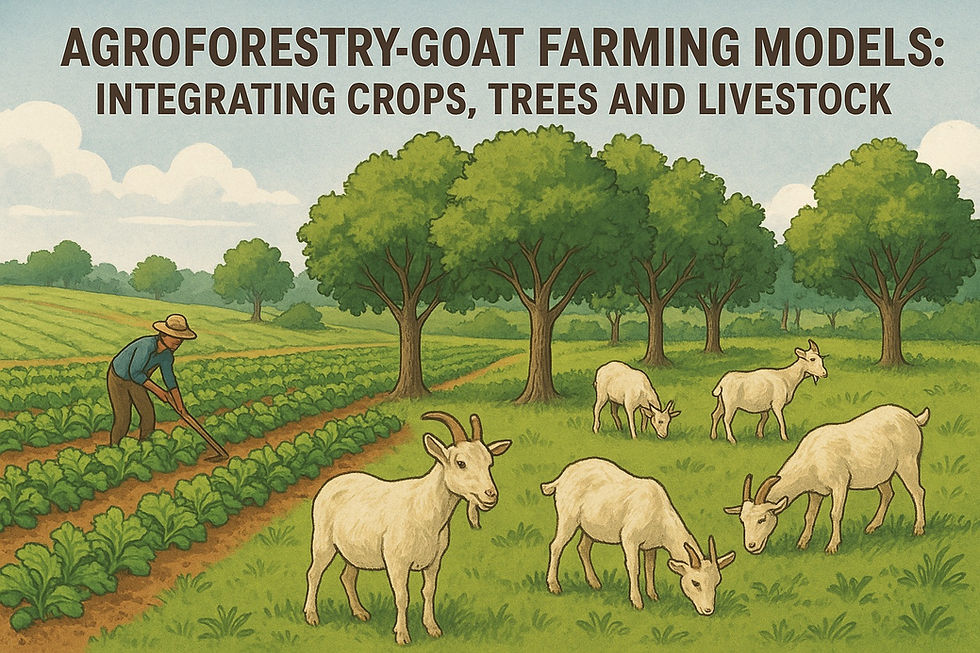Backyard Poultry and Carbon Footprints: A Sustainable Protein Source?
- Global Services TGT
- Jun 27
- 2 min read
As the world grapples with climate change, the quest for sustainable and low-carbon food systems is intensifying. While industrial livestock systems are often criticized for their environmental impact, backyard poultry farming—especially in countries like India—offers a compelling alternative: low carbon emissions, low input, and high nutritional returns. But a question on how sustainable backyard poultry really is? Can it help feed communities and fight climate change?
The Climate Cost of Protein: Globally, the livestock sector contributes around 14.5% of total greenhouse gas (GHG) emissions, with industrial meat and dairy production being the primary wrongdoers. Large-scale poultry farms, though more efficient than ruminants, still depend heavily on feed inputs like soya and maize, often grown using chemical fertilizers and transported over long distances.
In contrast, backyard poultry operates on a far simpler and more sustainable model.
Why Backyard Poultry Has a Lower Carbon Footprint
Minimal Feed Inputs: Indigenous hens in rural India forage for worms, insects, crop residues, and fresh kitchen waste. This eliminates the need for energy-intensive commercial feed, significantly reducing emissions from cultivation, transport, and processing.
Low Infrastructure Needs: Unlike industrial farms, backyard poultry doesn’t rely on high-maintenance sheds, lighting, or mechanized equipment. Natural ventilation, homegrown crops, and family labor reduce both energy use and construction carbon costs.
Zero Food Miles: Eggs and meat from backyard hens are consumed within the household or surplus sold locally, eliminating long-distance transport and cold-chain emissions.
Waste-to-Resource Cycle: Poultry droppings are composted or directly applied as organic manure, improving soil fertility and cutting the need for chemical fertilizers—another major source of GHGs.
Backyard Poultry vs. Industrial Poultry: A Quick Comparison
Parameter | Industrial Poultry | Backyard Poultry |
Feed source | Commercial feed | Foraged/local feed |
Energy use | High | Low |
Emissions | Medium to high | Very low |
Production scale | Large | Small |
Economic model | Commercial | Subsistence + small trade |
Nutritional access | Urban-focused | Local, household level |
Beyond Emissions: Social and Ecological Benefits
Empowering Women: In India, women often manage backyard poultry, giving them greater control over food and income.
Nutritional Security: Eggs are a rich, affordable protein source for children and pregnant women, especially in tribal and rural areas.
Breed Preservation: Indigenous breeds like Aseel, Kadaknath, and Nicobari are hardy, disease-resistant, and genetically diverse—qualities essential for long-term sustainability.
Challenges That Need Addressing: While backyard poultry is low-carbon and eco-friendly, its potential is constrained by:
Limited access to veterinary services and vaccinations.
Poor housing during monsoon or harsh winters.
Market barriers and undervaluation of desi eggs and meat.
Public investment in training, health care access, breed improvement, and market linkages could significantly amplify the environmental and economic benefits of this sector.
Backyard poultry may not match the scale of industrial systems, but it doesn't need to follow. Its value lies in supplementing household nutrition, diversifying income, and contributing to climate resilience, especially in vulnerable regions. In the age of sustainability, the humble desi hen might just be one of India's smartest climate allies.



Comments